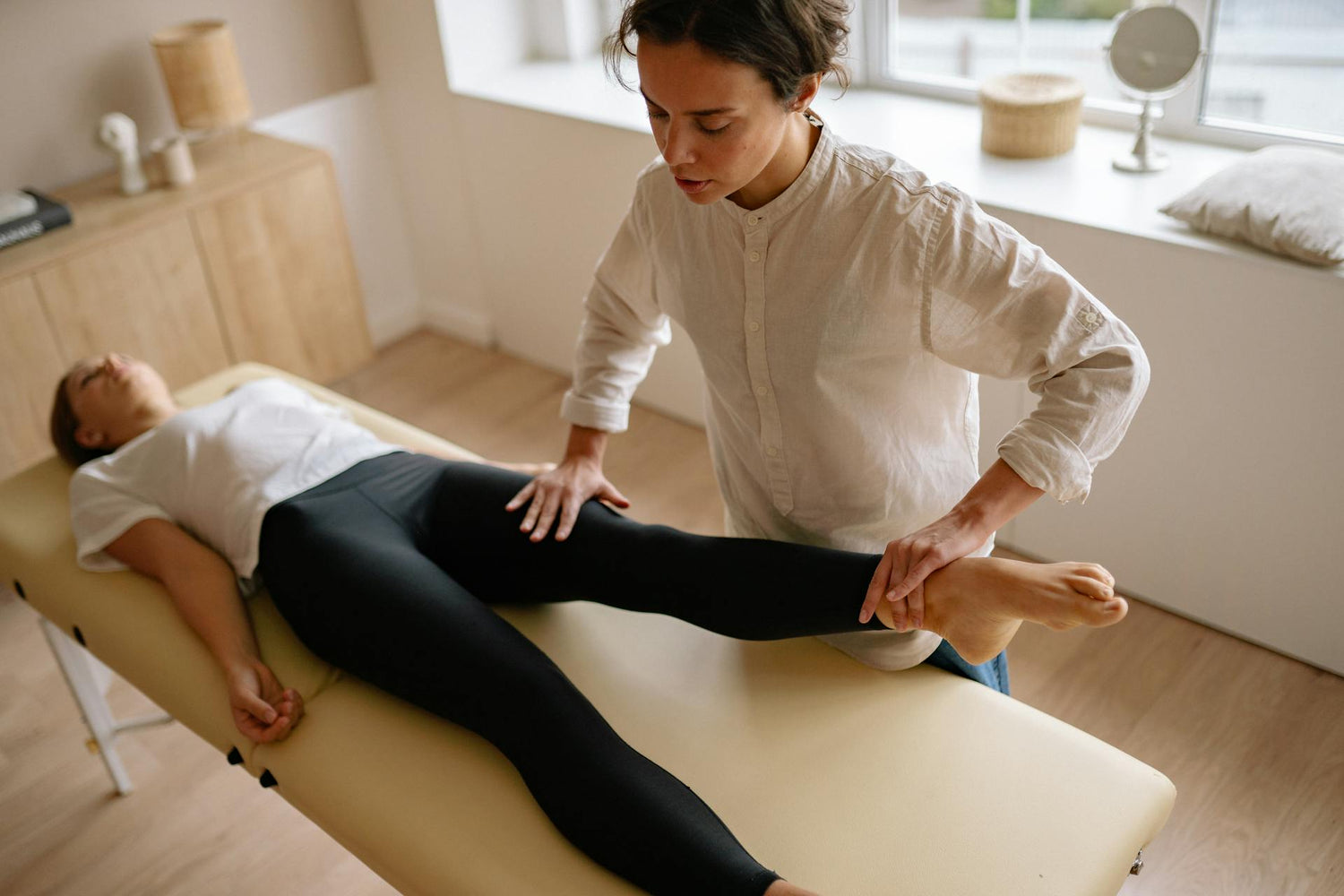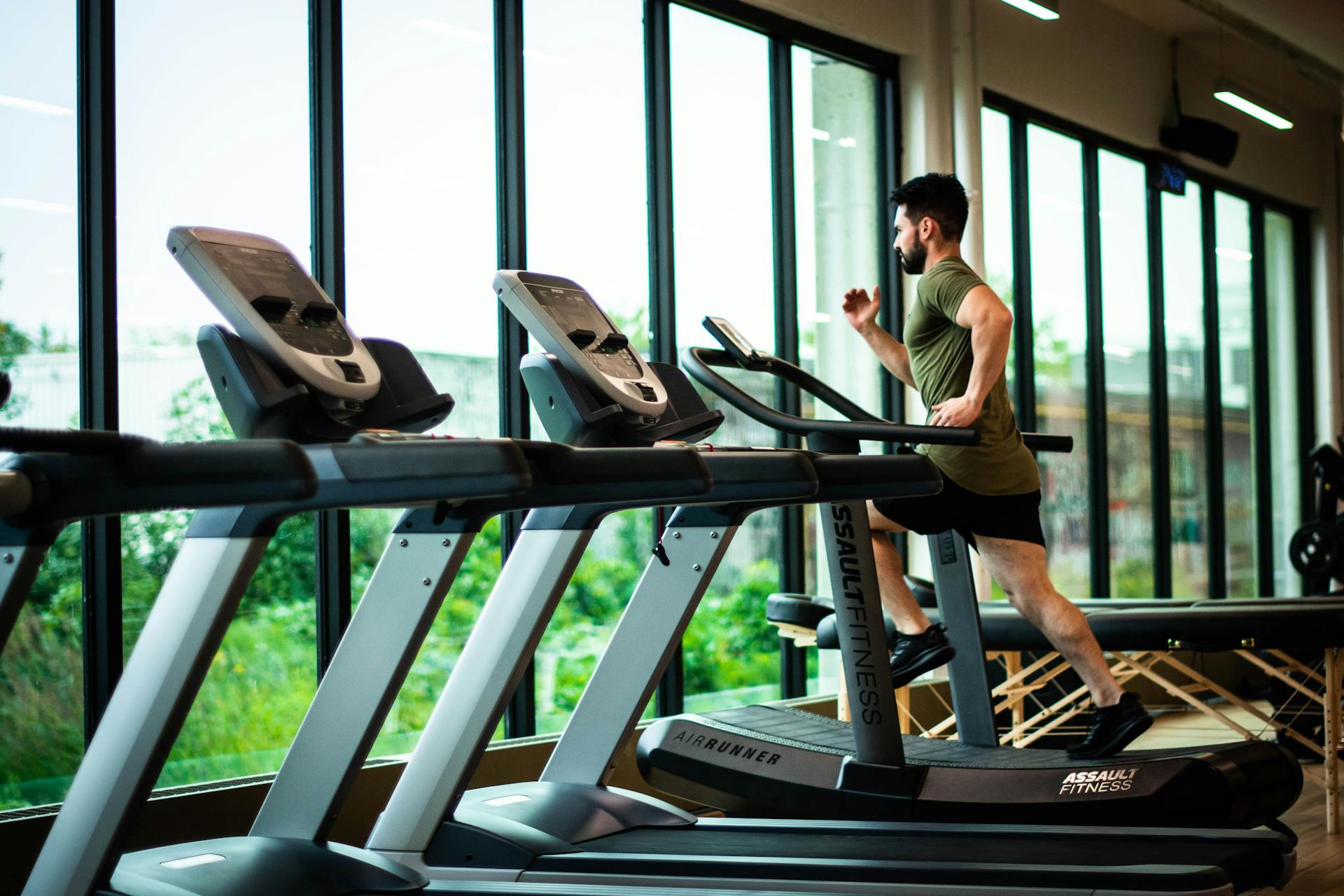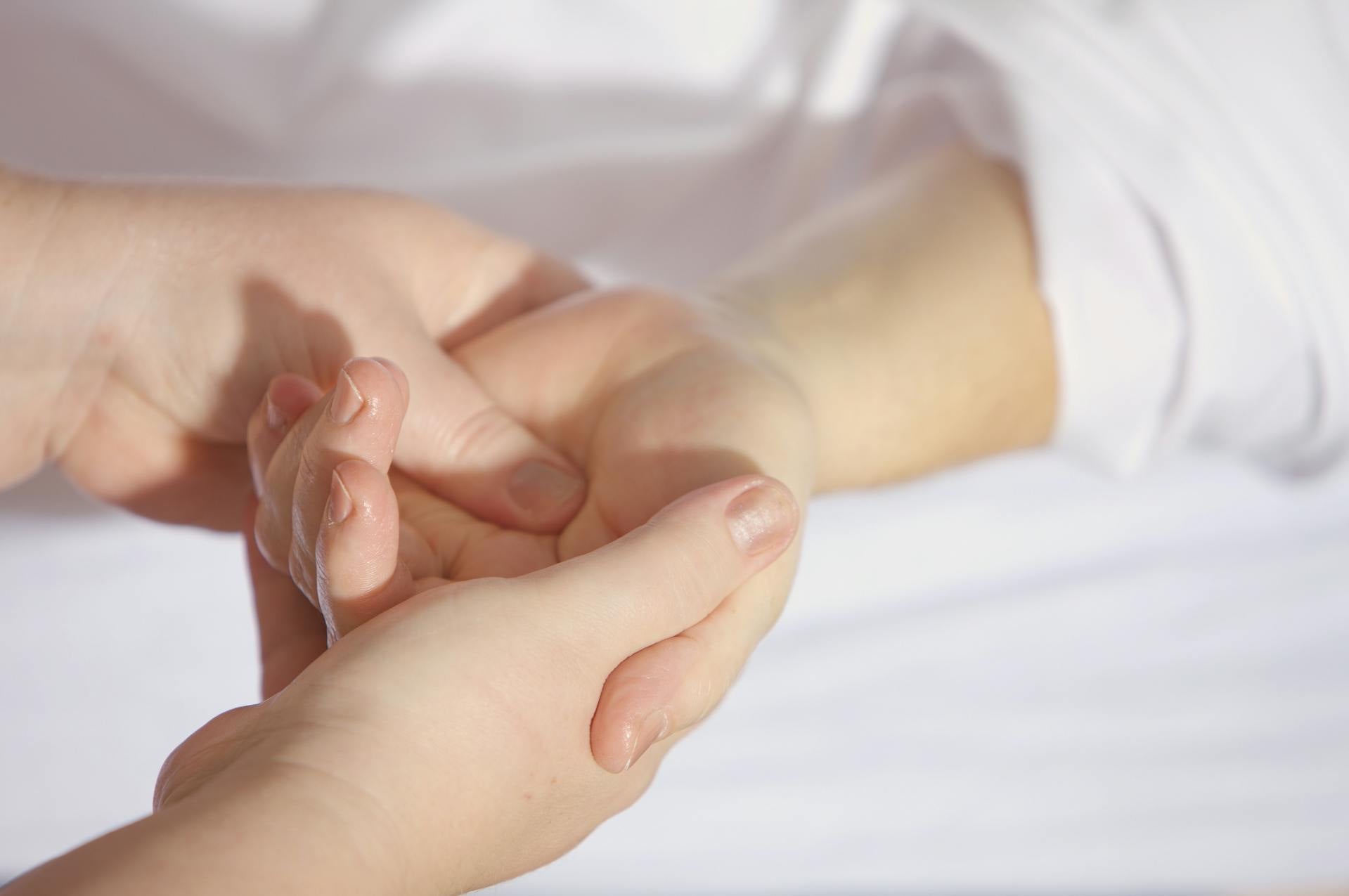Whether you’re a kickboxer, a trail runner, or simply noticing more aches and pains as you get older, you’re not alone if you have hip flexor pain. These hardworking muscles are prone to inflammation and injury in athletes. And for the rest of us, they can wind up sore and stiff from things as common (and seemingly harmless) as lounging on the couch for too long.
Maybe you’ve already tried remedies like over-the-counter pain meds or stretching to ease the pain. But if you’re looking for more tools to try, massage may be able to help.
Here’s what to know about the benefits of massage for hip flexor pain, along with some tips and techniques to try at home.
What Are the Hip Flexors?
Your hip flexors are a group of muscles that stabilize and mobilize your legs and knees. They include five main muscles: the psoas, rectus femoris, iliacus, pectineus, and sartorius.
The hip flexors are what power your ability to “flex” your legs upward and lift your knees in toward your chest. While they don’t always get the attention they deserve during workouts or stretching routines, they play a crucial role in everything from kicking to running and even climbing up the stairs.
Why Do Hip Flexors Get Tight or Painful?
Up to 1 in 10 people are affected by hip pain each day — and for many, the hip flexors are at the center of the discomfort. But why do these muscles seem so prone to pain and stiffness? Three of the most common reasons include:
Overuse
Overuse-related hip flexor pain is a common issue for athletes who rely on powerful kicking, jumping, or sprinting motions in their sports. These include:
- Soccer players
- Sprinters and runners
- Mixed martial artists
In activities like these, repeating the same motion over and over (especially without enough recovery days during the week) can cause microscopic damage that, over time, could snowball into a repetitive strain injury. Fortunately, the outlook for overuse-related hip flexor strains is very good — and with the right recovery routine, you can usually expect to be back in action within a few weeks.
Trauma or Injury
Acute injuries are another main cause of hip flexor pain, and you’ll usually know right away when they happen. For example, you might notice pain after a fall or other direct impact to the hip, which could indicate a muscle or tendon tear. Unlike overuse pain, these injuries can take a bit longer to fully heal.
Lack of Activity
Your hip flexors require a balance of healthy movement and rest to stay healthy — and just how overuse can cause pain and stiffness, so can underuse.
This is because when you sit for a long time — like when you’re binge-watching a TV show or working at your desk — your hip flexors are locked in a shortened position. Hours of this day and night, over several months or years, can cause the muscles to lose strength and flexibility.
Underusing the hip flexors tends to cause more stiffness than pain, but the lack of range of motion can make certain everyday movements more painful than usual. In these cases, you might also notice your hips cracking or popping often.
How To Know If You Have Tight Hip Flexors
While tightness at the front of your hips is one clear symptom to look for, here are some other, less obvious signs that your hip flexors aren’t as flexible as they could or should be:
- Your body feels generally “out of alignment”
- Your lower back feels tight or painful
- You have knee pain
- You hear snapping or popping when doing certain movements, such as running or leg lifts
Testing for Tight Hip Flexors: The Thomas Test
To see for sure whether your hip flexors are tight, the Thomas Test can help. Used by physicians, this test assesses hip flexor stiffness by checking your hip range of motion in a semi-relaxed pose. Here’s how it looks:
- Your doctor will ask you to sit on a raised table with your legs hanging over the edge.
- You will then use your hands to bring one leg in toward your chest.
- Next, your physician will help you gently lie back on the table while keeping your resting leg in place.
If your resting leg lifts in the air as you lie back, it means that your hip flexors are having trouble comfortably extending — which usually indicates tightness. Additionally, your physician will look at your lower spine while you lie back; if it lifts off the table or curves more than it should, it might mean that stiff hip flexors are pulling you out of alignment.
How Can Massage Help Hip Flexors?
If you’re struggling with stiff and achy hip flexors, here are some of the benefits you could experience from a good massage:
Mobility and Range of Motion
Because massage relaxes the muscles, breaks up knots, and targets scar tissue, it can be a great complementary option for supporting your hip flexor mobility. And if you’ve got a foam roller stashed away at home somewhere, it turns out that it may be one of the best tools for the job.
In one small 2019 study, researchers looked at the effects of foam rolling the quads (the large muscles on the front of the thighs) on hip flexion. They recruited 25 men to compare the effects of foam rolling versus roller massage.
Remarkably, they found that both interventions led to a small boost in hip range of motion. But specifically, foam rolling and/or longer massage sessions (two minutes as opposed to one) seemed to bring the best results.
Pain Relief
Ever had a painful knot in your back and asked a partner to knead it out for you? Or spent some time mindlessly squeezing your achy calves after a run? If so, you already intuitively understand the power of massage for pain relief.
When it comes to sore or stiff hip flexors, massage can help release deep muscle tension by triggering the body’s relaxation response. Plus, by stimulating the muscle tissue, it can support the release of feel-good endorphins and may even disrupt pain signals — making it a helpful tool when you could use some in-the-moment pain relief.
Circulation
One more way that massage can support healthy hip flexors is by promoting healthy circulation. It works by generating warmth through its friction and pressure, which can encourage blood vessels to relax and widen. As a result, it may help to temporarily boost the flow of oxygen and nutrient-rich blood to sore, tight muscle tissue.
How To Massage Hip Flexors: 3 Ways

Curious about using massage to tackle hip flexor pain at home? Here are three simple techniques for getting started:
Iliopsoas Foam Rolling
As some of the deepest hip flexors, the iliopsoas muscles tend to hold a lot of tension. They can sometimes be tough to target with self-massage, but this foam rolling technique can work as one easy, gentle way to roll them out:
- Find a wide, comfortable area on the ground. (There should be enough space for you to fully extend your body.)
- Place the foam roller on the floor in front of you.
- Get on all fours over the foam roller, and gently lower your right hip down onto it. Bend your left leg out to the side for support.
- Use your body weight to apply moderate pressure. Then, begin to roll out the small muscles in the front of your hip in slow, steady motions.
- After 30–60 seconds, you can rotate your body to the side slightly to target the outer edge of the hip flexors.
- Continue to gently roll the muscles for another 30–60 seconds.
- Repeat with the other side.
Quadriceps Foam Roll
A quadriceps foam rolling session can help you target the rectus femoris — a long muscle on the thigh that helps with both hip flexion and knee extension. Rolling out this muscle before or after working on the iliopsoas can help you create a more well-rounded hip flexor massage routine.
Here’s how the technique works:
- Find a comfortable, wide space on the ground, and place the foam roller out in front of you.
- Next, get on all fours over the foam roller.
- Align it horizontally with your left thigh, and gently lower your body onto the roller. Use your arms and right leg bent out to the side for support.
- Using moderate pressure, slowly and steadily roll up and down the length of the quadriceps muscles.
- Optionally, rotate your body slightly to target the quadriceps from different angles.
- Roll for a total of 1–2 minutes.
- Repeat with the other leg.
Massage Gun
When it comes to hip flexor massage, a massage gun is one of the quickest, most powerful options to try. One of the main advantages is that it does all of the work for you, so you won’t have to manually roll or massage your hips yourself.
Here’s what a quick hip flexor session with a massage gun might look like:
- Choose your desired head attachment. (If you’re not sure what you prefer, the round ball attachment is almost always a safe place to start.)
- Turn your massage gun to its lightest setting.
- Gently glide it side-to-side across your upper hip flexors for 15 seconds. (Tip: Be sure to hold the massage gun at an angle, rather than pressing it straight on.)
- Make your way down the leg, sweeping the massage gun across the quadriceps muscles for another 15 seconds.
- Now that your muscles are warmed up, feel free to gradually increase the massage intensity to your comfort level.
- Continue to sweep the massage gun across the entire area, from just above the knee to the hip, for a total of 1–2 minutes.
When (and When Not) To Massage the Hip Flexors
If you’re after hip flexor mobility and pain relief, it can be generally helpful to self-massage a few times per week, as long as it feels soothing to you. There are a few exceptions to this, including:
- When you have a recent acute injury, like a strain or tear: In these cases, it’s essential to wait until the swelling and inflammation have gone down before trying massage. When in doubt, don’t hesitate to check with your physician first.
- If massage feels aggravating or doesn’t seem to be helping: This is often a sign that your muscles need more time to recover before trying massage. It might also mean that you should start with gentler pressure and shorter sessions.
- You have underlying medical conditions, signs of infection, circulatory problems, a history of blood clots, or any other symptoms that indicate it’s time to see your doctor.
When To See Your Doctor About Hip Flexor Pain
Most cases of hip flexor pain will ease up on their own with a few weeks of TLC, including some light stretching and ice as needed. But if you’re wondering whether it’s time to see a doctor about hip flexor pain, here are some signs to look for:
- The pain isn’t improving or is worsening after a few days of rest
- You have trouble putting weight on your affected leg
- The pain gets in the way of your daily life
In addition, it’s important to get medical care right away if you have a painful acute injury, are unable to move your leg, are showing signs of an infection, or notice that your hip joint looks or feels out of place.
Combining Stretching With Hip Flexor Massage
Paired with regular self-massage, stretching can go a long way in boosting your hip flexor health. If you’re an athlete or gym regular, doing more hip mobility work can help support blood flow, healing, and flexibility in between your training sessions. And for non-athletes, it can counteract the stiffness that can come as a side effect of a sedentary lifestyle.
There are many types of hip flexor stretches out there — but to keep things simple, here’s one of the best beginner options to start with:
Note: If you have underlying medical conditions or are recovering from an injury, be sure to check with your physician or physical therapist before trying new exercises.
Kneeling Lunge Hip Flexor Stretch
One of the most powerful hip flexor stretches is the kneeling lunge stretch. An easy yet effective movement, it helps mobilize the hip joints while gently pulling the hip flexor muscles into their lengthened positions. Here are the steps:
- Kneel into a lunge position with your left foot planted on the ground in front of you and your right leg resting behind you.
- If your back knee feels uncomfortable, you can place a towel under your leg for extra support. (For a visual of this pose, be sure to check out this video.)
- Lean forward into the lunge until you feel a stretch in the right hip flexors. (Tip: Aim to keep your posture straight and avoid leaning forward too much here.)
- Hold the pose for 10–20 seconds.
- Repeat 3–5 times.
- Switch legs, and repeat.
Other Tips for Keeping Your Hip Flexors Healthy
Beyond self-massage (and the occasional stretch throughout the day), here are some tips to help you fend off tightness and overuse-related hip flexor pain long-term:
- Be intentional about recovery from intense physical activity. If you’re involved in sprinting, running, or kicking sports like MMA, aim to strategically plan your training so that your hip flexors get a few recovery days each week.
- Practice strengthening exercises to target the muscles that support your hip flexors, like the glutes and core.
- If you work at a desk, make it a point to stand and walk around every hour or so. This gives your hip flexors a chance to lengthen and get some fresh blood flow in between sitting sessions.
The Takeaway on Hip Flexor Massage
Sore hip flexors are a common struggle for athletes, but they can also sneak up if you work sitting down or live an otherwise sedentary lifestyle. The good news is that massage can help support these hardworking muscles by boosting mobility and soothing pain — whether you’re recovering from an intense run or a long day at the office.
For most people, foam rolling can be a simple and effective way to get started. But if you’re looking for a more effortless way to get daily massage at home, the tools from MedMassager can help.
Check out the MedMassage Accuvibe Mini massage gun today, or explore MedMassager’s line of trusted home tools here.



